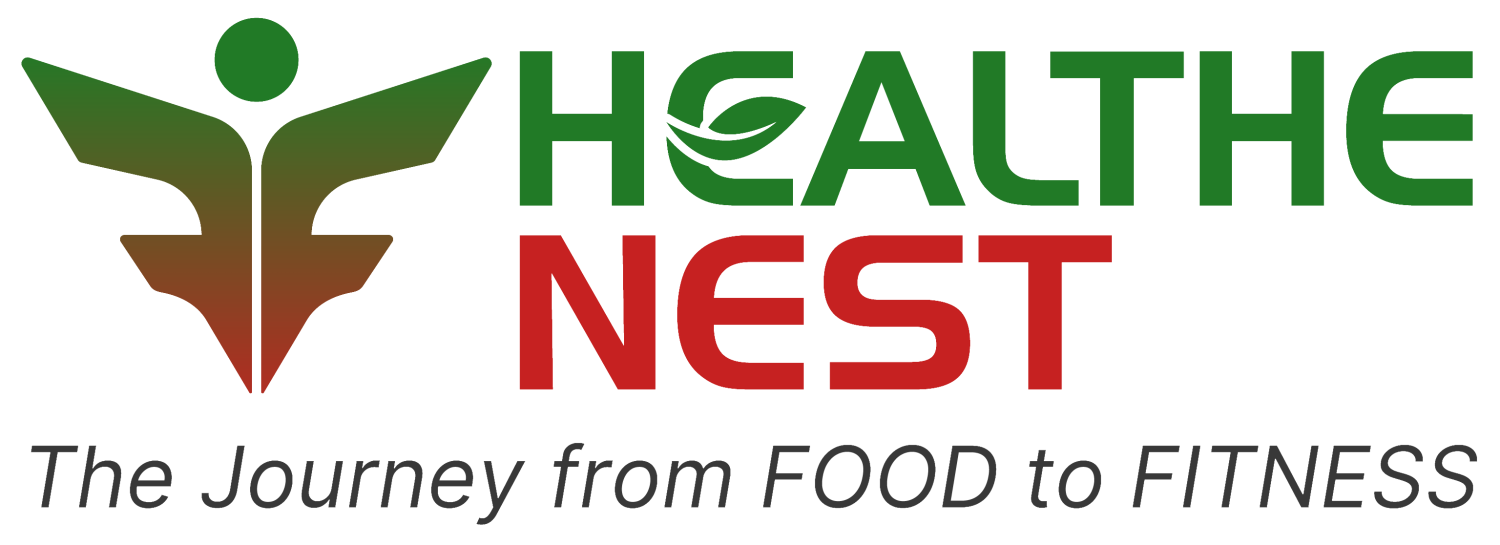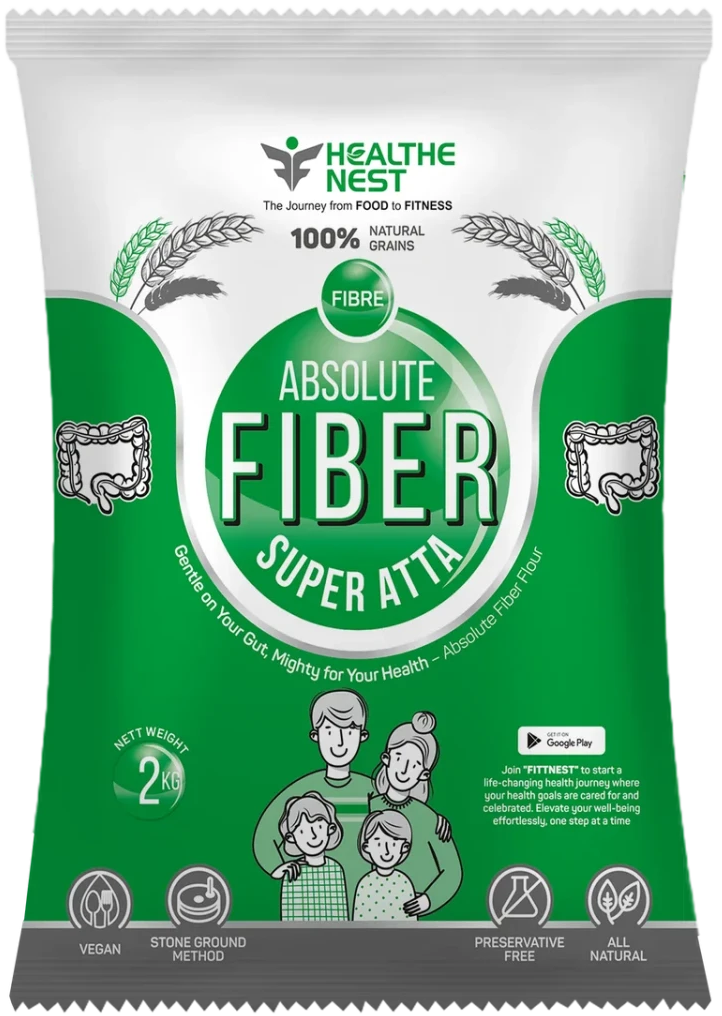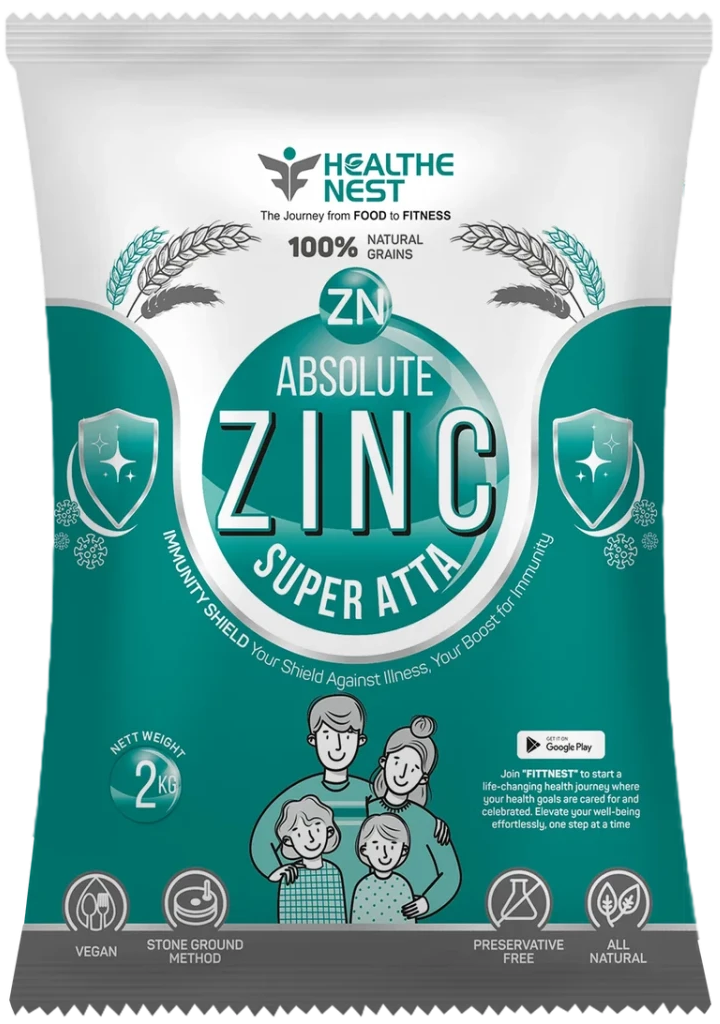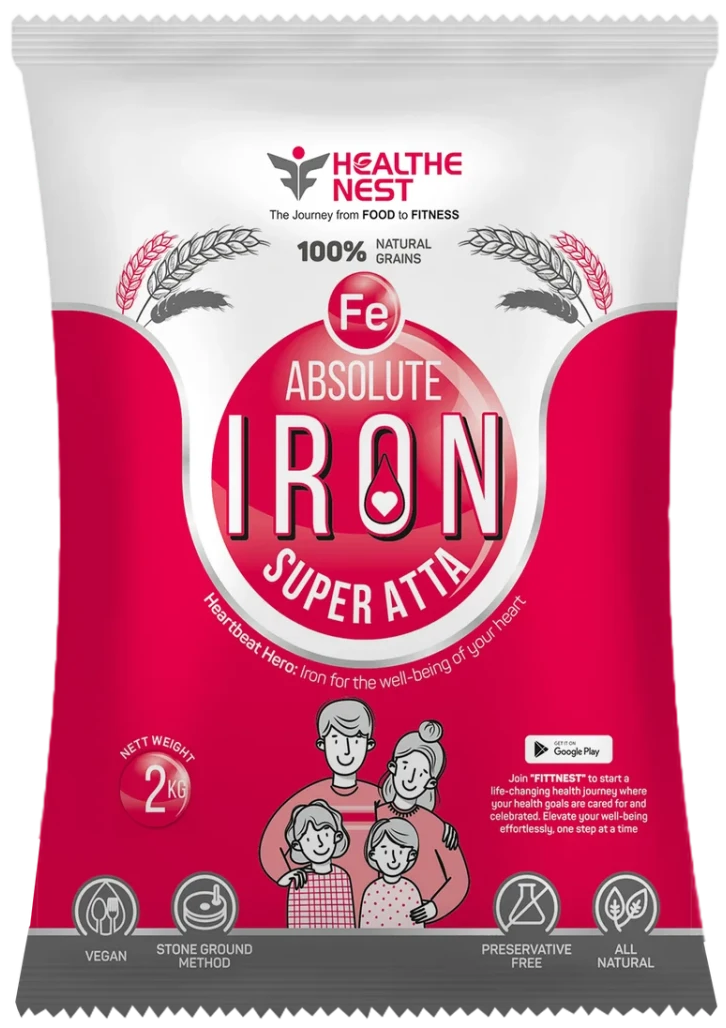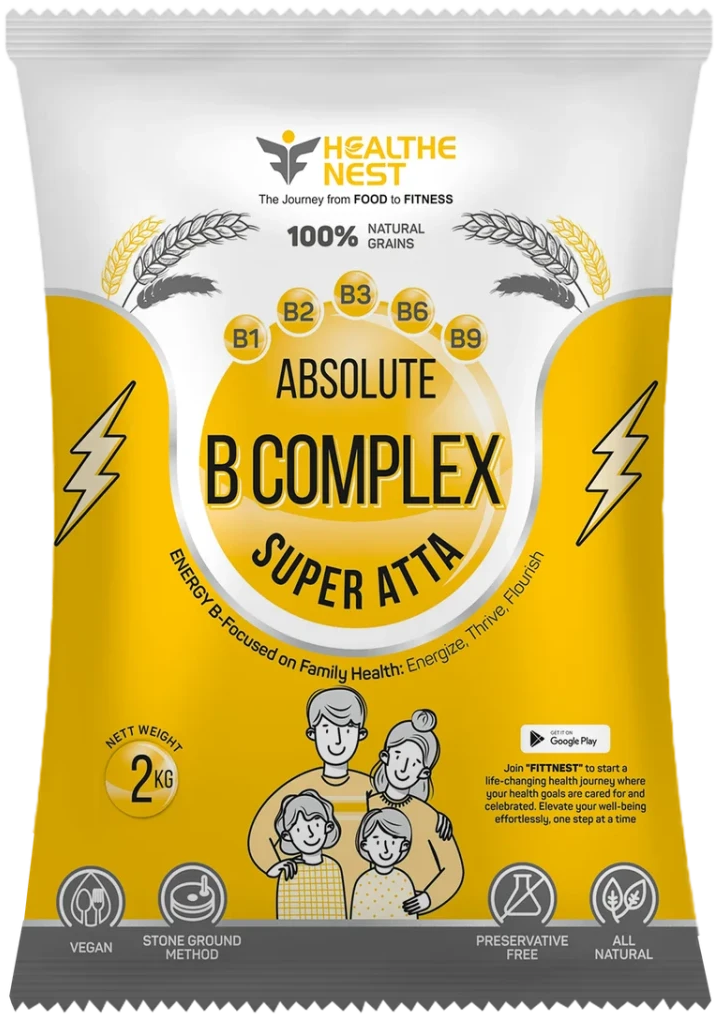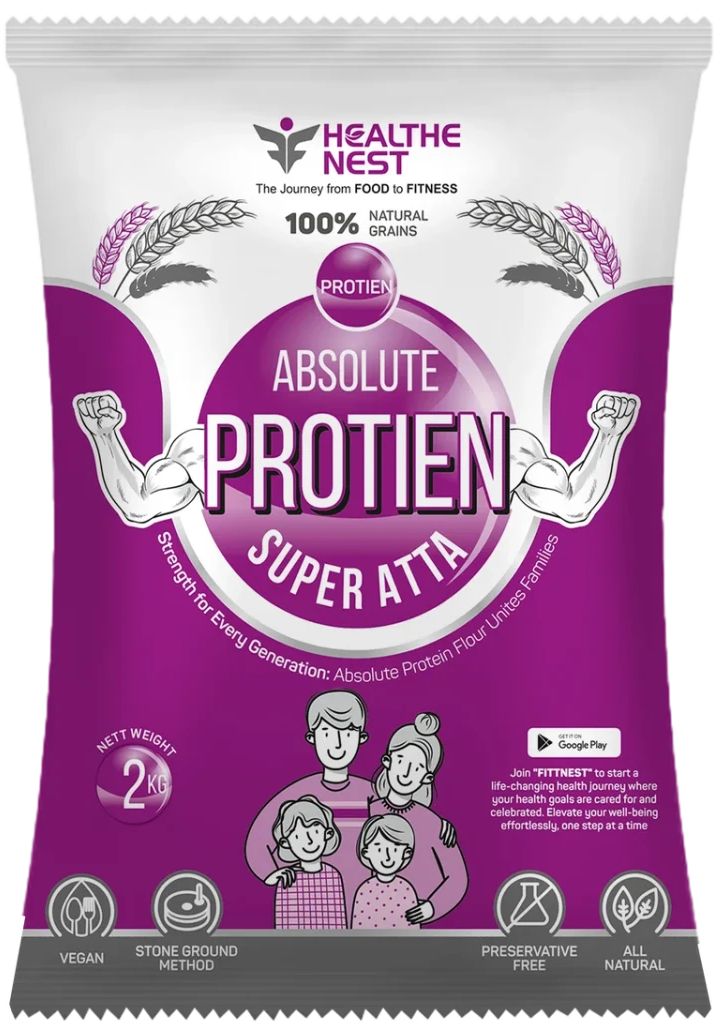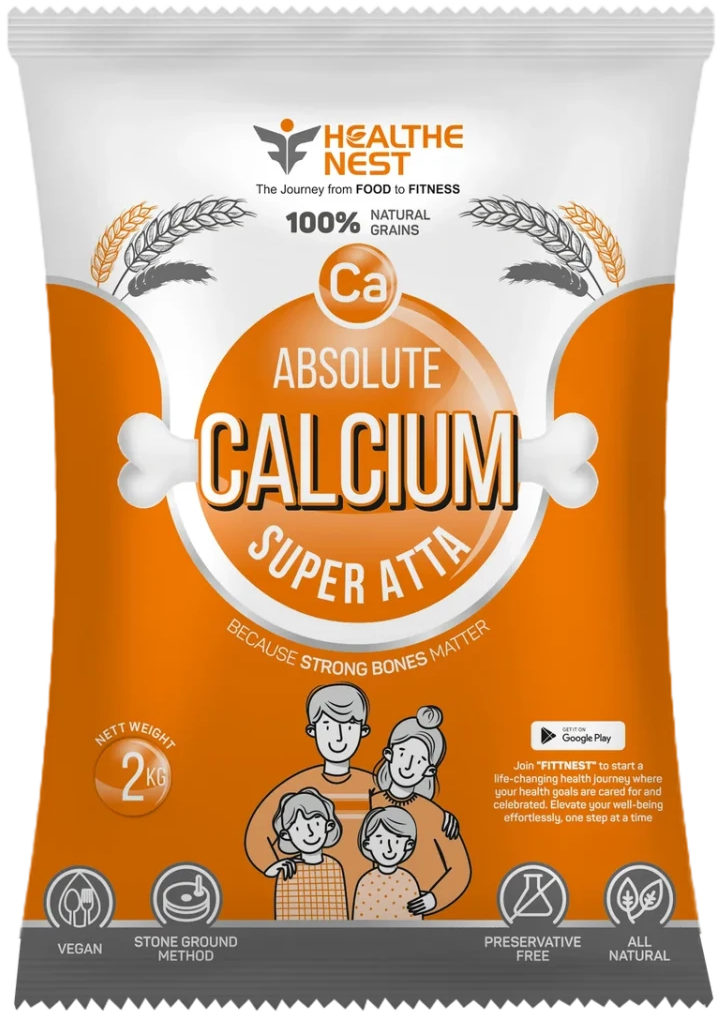doctor
- Home
- "doctor"

Dr. Prithmesh Mago
Anaemia: A growing global pandemic
Anaemia is one of the most common global nutritional deficiencies, especially amongst women, children, and adolescents. It occurs when the body does not have enough healthy red blood cells to carry oxygen, leading to symptoms like weakness, fatigue, pale skin, poor concentration, and low immunity.
The most common cause is iron deficiency; furthermore, inadequate protein intake can also worsen the condition since protein is essential for haemoglobin formation.
Instead of waiting for anaemia to set in, it is smarter to take preventive steps (prophylaxis) through daily diet. Regular consumption of foods that are naturally rich in iron, protein, folate, and vitamin B12 can help maintain healthy blood levels and reduce the risk of anaemia.
Role of Iron in Anaemia Prevention
Iron is a key component of haemoglobin, which carries oxygen in the blood. Without enough iron, the body cannot produce sufficient haemoglobin, leading to iron-deficiency anaemia.
Plant-based sources of iron (non-heme iron) include millets, spinach, beetroot leaves, jaggery, lentils, beans, nuts, and fortified flours. Pairing them with Vitamin C rich foods (lemon, amla, guava, tomato) helps improve absorption.
Role of Protein in Anaemia Prevention
Protein forms the building blocks of haemoglobin and supports red blood cell production. Rich protein sources are pulses, chickpeas, kidney beans, soya, nuts, seeds, milk, and cottage cheese.
How This Flour Mix Helps Combat Anaemia
1. Boosts Haemoglobin Naturally
Ragi, bajra, and sesame provide iron for haemoglobin synthesis. Protein-rich soya and chickpea ensure haemoglobin structure is built efficiently.
2. Improves Iron Absorption
The presence of protein enhances the utilization of dietary iron. Pairing chapatis/parathas made from this flour with lemon, amla, or tomato further improves absorption.
3. Supports Energy & Immunity
Iron increases oxygen supply, reducing fatigue. Protein strengthens immunity and helps in cell repair.
4. Family-Friendly Nutrition
The flour can be used for rotis, thepla, parathas, dosas, and baked snacks, making it easy for the entire family to consume daily. Combining protein with iron-rich foods enhances overall utilization by the body.
Iron and Protein-Rich Aata – A Smart Solution
To make anaemia prevention simple and sustainable, using a specially formulated iron and protein-rich aata (flour mix) is an excellent idea.

Dr. Fatema Katawala
What Does the Future of Nutrition Hold? India’s Nutritional Position – Then and Now Nutrition is no longer just about eating enough; it's about eating right. As India progresses economically and technologically, our nutritional patterns have also seen a dramatic shift some promising, some concerning. A Look Back: India’s Nutritional Snapshot in the Past In the mid-1970s, India's food security efforts were centered around staple cereals. The average per capita daily calorie intake was ~2,100 kcal/day (ICMR, 1975), with 68% of energy intake coming from cereals. Despite these calories, nutritional quality was poor: Stunting (low height for age) was as high as 60% among children in some states. Micronutrient deficiencies especially iron, vitamin A, and iodine were widespread. Undernutrition was driven by poverty, food insecurity, poor maternal health, and lack of dietary diversity. Where Do We Stand Now? Thanks to several national nutrition programs and rising awareness, progress has been made but not evenly. Improvements: Stunting in children under 5 reduced from 38.4% to 35.5% (NFHS-5, 2019–21) Underweight children decreased from 35.8% to 32.1% Infant Mortality Rate reduced significantly Increased access to fortified foods, midday meals, and better maternal health programs New Concerns: We now face a dual burden of undernutrition and overnutrition. Overweight/Obesity: 24% of urban women and 23% of urban men are now obese or overweight (NFHS-5) Micronutrient Deficiencies: 57% of women and 25% of men are anemic Over 2/3rd of the Indian population does not meet the recommended intake of essential micronutrients like iron, vitamin A, and calcium Diet Shift Trends: A shift from traditional, nutrient-rich diets to processed foods and sugary drinks has increased the burden of non-communicable diseases (NCDs) like diabetes, hypertension, and heart disease. According to WHO, 61% of deaths in India were attributed to NCDs What Measures Have Been Taken? India has made systematic efforts to address nutritional challenges at every level: ? Policy Interventions: POSHAN Abhiyaan and the National Nutrition Mission target malnutrition through a lifecycle approach. Integrated Child Development Services (ICDS) provides nutrition to children <6 years and pregnant/lactating mothers. Mid-Day Meal Scheme improved school nutrition nationwide. ? Fortification Programs: Salt (iodine), wheat flour (iron and folic acid), edible oils (vitamin A & D) Biofortified crops like zinc-rich rice and iron-rich pearl millet are gaining traction ? Rise of Nutrition Awareness: COVID-19 brought a focus on immunity and wellness. Demand for clean-label, functional foods has surged. Future of Nutrition in India: What Lies Ahead? As we look ahead, India’s nutrition landscape will be shaped by innovation, technology, and sustainability. 1. Personalized Nutrition Thanks to breakthroughs in genomics, wearable tech, and AI, diets will soon be tailored to individuals' genes, microbiomes, and real-time metabolic data. Nutrigenomics enables dietary plans based on your DNA Wearables + diet tracking apps can sync glucose levels, heart rate, and food intake Personalized data will provide insights into how we metabolize food differently 2. Nutraceuticals & Functional Foods India’s nutraceutical industry is booming projected to reach USD 18 billion by 2025. Functional foods (probiotics, omega-3s, antioxidants) now support immunity, gut health, and hormone balance. However, the market is flooded with unregulated products. "Nutrivigilance and phytovigilance are the need of the hour." 3. Biofortification for Hidden Hunger Crops enriched with iron, zinc, and vitamin A aim to fight “hidden hunger” in rural populations. Examples include: Zinc rice for growth Iron-rich millets for anemia Vitamin A sweet potato for vision and immunity This is a cost-effective and sustainable strategy to improve national micronutrient status. 4. Sustainable Food Systems Nutrition is now viewed in conjunction with climate change and food sustainability. Moving toward plant-based, less processed, and local foods Reducing food waste and promoting eco-friendly farming practices A “Sustainable Food System” ensures nutrition security for both current and future generations 5. Digital Nutrition & AI The FSSAI’s Eat Right Movement integrates mobile tracking, nudges for healthier choices, and food safety. Future tech will allow: AI-powered shopping assistants Food scanners for real-time nutrient analysis Chatbots giving custom nutrition advice Conclusion India’s journey from food security to nutrition security is still ongoing. While we’ve seen improvements in child nutrition and awareness about healthy eating, the rise in NCDs and persistent micronutrient deficiencies highlight the need for a balanced, people-first approach to nutrition. The future of nutrition is personalized, sustainable, fortified, and increasingly tech-driven but most importantly, it must be inclusive.

Dr. Fathimatul Hiba
Breakthrough in Preventive Nutrition and Health How Today’s Food Choices Can Prevent Tomorrow’s Diseases Introduction “Let food be thy medicine and medicine be thy food.” This ancient wisdom from Hippocrates is more relevant today than ever. As modern medicine evolves, preventive nutrition, the strategic use of food and nutrients to avoid disease is gaining momentum. Instead of waiting for illness to strike, scientists, health experts, and policymakers are advocating for a proactive, food-first approach. But what are the real breakthroughs? And how are they transforming lives? What Is Preventive Nutrition? Preventive nutrition is a science-backed approach to eating patterns and nutrient intake that helps: Prevent the onset of chronic diseases Delay or reduce complications Improve overall quality of life It is especially crucial in countries like India, where non-communicable diseases (NCDs) such as diabetes, hypertension, obesity, and cardiovascular disorders now account for more than 60% of all deaths. Breakthroughs That Are Changing the Game 1. Biofortification: Nutrients From the Source Biofortification is the process of breeding crops to increase their nutrient content. Unlike supplements, it works from the soil up, ensuring every bite is more nutritious. Examples: Iron-rich pearl millet: Proven to improve iron status in adolescent girls Zinc-enriched rice and wheat: Helps improve immune function and growth in children Vitamin A-rich orange-fleshed sweet potatoes: Reduce deficiency-linked blindness in rural children Biofortified crops can significantly reduce micronutrient malnutrition in resource-poor populations. 2. Medical Nutrition Therapy (MNT): Treating With Food MNT is a personalized nutrition plan designed by trained dietitians to prevent or manage medical conditions. It’s evidence-based and often used in: Diabetes Renal disease PCOS Gastrointestinal disorders Cancer care Example: In a study, it was found that MNT reduced HbA1c levels by up to 2% in type 2 diabetic patients without additional medications. 3. The Rise of the Gut-Brain Axis Emerging research shows that our gut microbiome (the trillions of bacteria in our intestines) can influence: Mental health (anxiety, depression) Weight regulation Inflammation Immunity A 2021 meta-analysis in Frontiers in Psychiatry reported that probiotic interventions led to improvements in mood and reduced depression scores. A diverse and healthy gut microbiota is linked to stronger immunity and reduced inflammation. Foods for Gut Health: Fermented foods: curd, kanji, kimchi, kefir Prebiotics: garlic, onions, bananas, oats 4. Nutraceuticals and Functional Foods Nutraceuticals are natural or fortified products that offer health benefits beyond basic nutrition. This includes: Omega-3 fatty acids (for heart and brain health) Curcumin (anti-inflammatory) Ashwagandha (stress reduction) Antioxidants (for cell protection) A randomized trial in The American Journal of Clinical Nutrition (2019) confirmed that omega-3s reduced triglyceride levels and improved heart health in adults. Note: While promising, not all nutraceuticals are regulated, so scientific validation is essential. 5. Technology Meets Nutrition: Personalized Preventive Care With the rise of wearable tech, genetic testing, and AI, nutrition is now becoming hyper-personalized. Continuous Glucose Monitors (CGMs) help tailor carb intake in diabetics DNA-based diet plans assess metabolism and nutrient needs AI-based apps like HealthifyMe and MyFitnessPal offer predictive nutrition coaching A study in Cell (2015) by the Weizmann Institute showed that people respond differently to the same food, based on gut microbiota and lifestyle, emphasizing the need for personalized diets. Real-World Impact Example 1: Iron-Rich School Meals in Karnataka In 2021, fortified rice was introduced in midday meals. After 6 months, anemia prevalence dropped by 20% among school-going girls (ICMR-NIN Report, 2022). Example 2: Probiotic Yogurt in Tamil Nadu A local NGO provided daily probiotic yogurt to women with gut issues. After 8 weeks, 70% reported better digestion and energy levels. Clinical Pilot by MS Swaminathan Research Foundation) Conclusion Preventive nutrition is no longer a luxury, it’s a necessity. From smart food tech to fortified staples and ancient wisdom meeting modern science, we are entering a new era where what we eat today can change our health tomorrow. Let’s embrace food as a tool for prevention, not just cure.

Dr. Alifya Mistry
New Career Horizons in the Nutrition Field The Science of Nutrition Is Expanding, So Are Its Careers Introduction Gone are the days when nutrition meant just working in a hospital. Today, with the rise of chronic diseases, wellness tech, and consumer demand for clean eating, nutrition has become one of the fastest-evolving career fields. Whether you're passionate about public health, clinical care, sports, food innovation, or digital wellness, there's a space for you. According to a report in the Journal of Nutrition Education and Behavior (2021), the demand for certified nutrition professionals is expected to grow by 15% by 2030, faster than many other health professions. Emerging Career Opportunities in Nutrition 1. Clinical Dietitian with Specializations Gone are the days of just “general dietitians.” Today, many clinical professionals specialize in: Renal nutrition Oncology nutrition Critical care Bariatric and metabolic surgery nutrition Hospitals and specialty clinics are increasingly recruiting domain-specific experts. A study published in Clinical Nutrition ESPEN (2020) emphasized the role of specialized dietitians in improving ICU patient outcomes. 2. Sports & Performance Nutritionist With rising awareness in fitness, bodybuilding, and athletic performance, this career is booming. Work with athletes, fitness influencers, gyms, and academies Design meal and supplement plans for training, muscle gain, and endurance Collaborate with physiotherapists and coaches 3. Digital Nutrition Coach / Online Consultant Telehealth and app-based counseling are reshaping client engagement. Work independently or with startups (e.g., HealthifyMe, Cure.fit, Fitelo etc.) Offer online consults, diet monitoring, and progress tracking Build a global client base and flexible work-from-home schedule Bonus: Combine this with content creation or social media (YouTube, Instagram) to educate and inspire. 4. Public Health Nutritionist / Policy Advisor This is where nutrition meets impact at scale. Public health nutritionists work with: NGOs, WHO, UNICEF, and government missions (e.g., POSHAN Abhiyaan) Design and evaluate programs to reduce malnutrition and anemia Conduct field research, training, and nutrition literacy campaigns 5. Food Product Developer / Nutrition Technologist Be the brains behind: Fortified cereals, protein bars, plant-based milks, gut-friendly beverages Nutraceuticals and health-focused convenience foods Label designing and quality assurance Work with F&B giants (Nestlé, Amul, Marico) or startups revolutionizing clean-label and functional foods. 6. Nutrition Researcher / Academic Writer Love research and evidence? Turn it into a career: Publish studies, work on clinical trials, or nutrition policy papers Write for journals, magazines, and nutrition brands Contribute to evidence-based guidelines and curriculum 7. Entrepreneur Build Your Brand Nutrition entrepreneurship is on the rise. You can start your own: Nutrition clinic (online or offline) Food product line (protein laddoos, herbal teas, fortified atta) Digital programs (e.g., PCOS coaching, gut health reset) Supplements or herbal brand According to a Statista report (2023), the Indian nutraceutical market is projected to reach USD 18 billion by 2025, offering massive opportunities for young innovators. Future-Ready Skills to Develop To succeed in these roles, focus on: Nutrigenomics and personalized nutrition Functional foods and gut microbiome science AI & tech-driven diet tracking Social media & brand building Writing evidence-based content Courses and certifications from FSSAI, and INFS can boost your credibility. Conclusion Nutrition is no longer a static field. It’s dynamic, diverse, and deeply human. Whether you’re helping a cancer patient recover, designing a millet energy bar, running a wellness YouTube channel, or shaping government policy, you’re part of something powerful.

Dr. Vikash Kaushik
India’s nutritional challenges are evolving day by day. While undernutrition was the only crisis that dominated national headlines, the current crisis is more insidious: micronutrient deficiencies that quietly and silently erode public health, especially among women and children. Calcium, an essential mineral for bone development and muscular function, is now one of the most underconsumed nutrients across all socioeconomic groups. As roti still forms the base of millions of Indian meals, fortified wheat flour like HealtheNest’s Absolute Calcium Super Atta emerges as a practical, science based solution that is not only nutritionally relevant but also environmentally and financially sustainable. Fortification is simply the process of intentionally adding essential vitamins and minerals to foods. In the case of HealtheNest’s atta, the focus is on calcium fortification, which is enriching the flour with bioavailable calcium compounds. The body requires 600–1000 mg of calcium per day, yet average intake across India remains well below this threshold. Fortifying a widely consumed food like atta allows the population to actively consume important and vital nutrients, without bringing huge changes in their dietary habits or incurring additional costs. This seems to be a hallmark of effective public health strategy. Moreover, by using stone-ground flour and 100% natural grains, the flour maintains integrity in taste and texture, while ensuring that added calcium is retained and absorbed efficiently during cooking. Regular consumption of calcium fortified staples can have huge impacts on bone density, dental health, muscular function, and also cardiovascular health. For children, it supports peak bone mass formation which is the backbone to lifelong skeletal health. For adults, it helps to prevent early onset of osteoporosis and frailty, especially in women postmenopause. But the benefits of the flour extend beyond the individual. A healthier population translates to reduced healthcare costs, improved productivity, and greater resilience against chronic disease outcomes that are especially crucial for developing nations managing large, diverse populations. India’s Food Safety and Standards Authority (FSSAI) has already recognized the need for staple fortification, with initiatives focused on iron, folic acid, and vitamin B12. However, calcium remains under-addressed despite the enormous data. As more than 60% of Indian households are consuming wheat flour daily, calcium fortified atta represents a scalable intervention with tremendous results. HealtheNest’s Absolute Calcium Super Atta aligns perfectly with this vision, providing a sustainable model that meets both nutritional policy goals and market feasibility. This model reflects a powerful shift: of moving from extractive food systems to regenerative ones, where food production supports the earth, not depletes it. One of the greatest strengths of fortified atta is that it requires no big behavioral change. Roti is already a fixature in Indian households. Unlike supplements, powders, or imported “superfoods,” this solution is culturally prominent, cost effective, and unique. HealtheNest’s approach ensures that price remains accessible, without compromising on quality. This is essential in ensuring adoption not just among urban population, but across semiurban and rural India where nutritional gaps are often the widest. As India’s population urbanizes and dietary patterns shift, the demand for convenience is rising but so is awareness about health and environmental sustainability. The flour industry is uniquely positioned to meet both these needs, especially when rising players like HealtheNest lead with integrity and innovation. Fortified, eco-conscious atta may well represent the future of everyday nutrition not as a niche product, but as a tool in combating hidden hunger, strengthening communities, and building a food system that works for people and the planet. Nutrition doesn’t always have to be complicated. It can begin with what we already know from a roti on the plate that we share at the table with our family. With science on its side and sustainability at its core, fortified atta like HealtheNest’s is looking to be more than a food product. It’s a systemised solution to one of India’s most pressing challenges, to ensure the health of its citizens without harming the earth. In a nation where wheat is consumed daily by millions of people, the path to better health may not lie in exotic superfoods or imported supplements but rather in transforming what’s already on our plates. The rising tide of nutrition related disorders in India, from bone demineralization and vitamin deficiencies to chronic fatigue and lifestyle diseases, shows a deeper systemic issue. This can be attributed to our daily staples lacking essential micronutrients. HealtheNest’s Absolute Calcium Super Atta offers a timely and intelligent solution to this growing crisis not just as a food product, but also as sustainable nutrition and regenerative supply chains. Despite rising economic growth, India continues to face widespread micronutrient deficiencies. According to ICMR, more than 63% of Indian adults fail to meet recommended calcium intake, resulting in weakened bone health, higher fracture risk, and long-term health complications such as osteoporosis. What makes this problem even more complex is that it is invisible. Calcium deficiency doesn’t show up in blood tests until it’s severe. And unlike protein or iron, it doesn’t get much public attention, even though its impact is both physical and economic Absolute Calcium Super Atta is fortified with four times more calcium than regular wheat flour delivering meaningful, measurable nutrition through a food that’s already deeply embedded in Indian culinary habits. No pills, no resistance, no education barrier. What distinguishes this solution is its foundation: ● 100% grains sourced directly from Indian farmers. ● Stone-ground using traditional methods, retaining nutrient density ● Minimal processing and no preservatives ● Packaging and transparent sourcing, contributing to circularity in food systems In short, this is not a exquisite health food but rather an affordable, culturally relevant, and scalable solution that's rooted in ecological values.

Dr. Vikash Kaushik
?️ Zinc: The Unsung Hero of Our Health ? What is Zinc and Why Does It Matter? Zinc might be a trace mineral, but its impact is anything but small. From supporting immunity, healing wounds, helping us grow, to ensuring reproductive health and even sharpening our senses of taste and smell — zinc plays a crucial role in over 300 enzyme reactions in our body. But despite its importance, zinc deficiency is surprisingly common, especially in developing countries like India. ?? India’s Nutritional Status: Then vs. Now ? Before (2000s): Around 30–50% of the Indian population was estimated to be zinc deficient (ICMR 2004–06). Traditional diets were heavy in cereals and pulses — high in phytates that block zinc absorption. Rural populations and children under 5 were the most affected. ? Now (2020s): According to the Comprehensive National Nutrition Survey (2016–18), 18–25% of children and adolescents still suffer from zinc deficiency. NFHS-5 (2020–21) shows some progress in addressing stunting and wasting, but hidden hunger, especially micronutrient gaps like zinc, still persist. ?️ Steps India Has Taken to Bridge the Zinc Gap 1. Food Fortification: Fortified wheat flour and rice with zinc are being introduced under FSSAI’s Eat Right Movement. Pilot projects on double fortified salt (iron + zinc) are underway. 2. Government Nutrition Schemes: POSHAN Abhiyaan and upgraded Mid-Day Meal Programs promote the use of fortified and diverse foods. 3. Therapeutic Supplementation: Zinc supplements are included in diarrhea treatment protocols under IMNCI for children. 4. Awareness Drives: Campaigns to improve diet diversity and bust myths around seeds, nuts, and pulses have increased awareness. ? Top Zinc-Rich Indian Foods (Per 100g) Food Item Zinc (mg) Pumpkin seeds 7.8 Cashew nuts 5.8 Roasted Bengal gram 3.0 Rajma / Chickpeas 2.8–3.3 Paneer (homemade) 3.1 Whole wheat flour 2.7 ? Tip: Soaking and sprouting legumes and grains reduces phytates and improves zinc absorption. ⚠️ What Happens When Zinc is Low? Zinc deficiency can result in: Stunted growth in children Weakened immunity and frequent infections Skin issues, delayed wound healing Poor reproductive health in men and women Mental fog and reduced cognitive function Vulnerable groups include pregnant women, growing children, adolescents, and elderly adults. ? Latest Research & Breakthroughs Zinc and COVID-19: Studies (Wessels et al., 2020) show zinc’s ability to reduce viral replication and enhance immune response. Zinc & Fertility: Zinc plays a role in improving sperm quality in men and regulating cycles in women with PCOS. Zinc & Mental Health: Recent links found between zinc deficiency and depression and anxiety. ? Final Thoughts: Why Zinc Should Be on Your Plate Daily Zinc isn’t just a nutrient; it’s your body's silent warrior. It doesn’t just fight infections — it builds resilience, improves healing, and protects long-term health. As India continues its fight against malnutrition and hidden hunger, let’s not forget the minerals that matter — and zinc tops that list. So, next time you're planning a meal, think beyond just calories. Think zinc. ? References Wessels I, Rolles B, Rink L. Zinc and immunity: An essential interrelation. J Nutr Biochem. 2020. ICMR-NIN Reports (2004–2021) Comprehensive National Nutrition Survey (CNNS) 2016–18 National Family Health Survey (NFHS-5) 2020–21 WHO Guidelines on Zinc Supplementation FSSAI Fortification Programs

Dr. Vikash Kaushik
In a world where lifestyle disorders like diabetes are on the rise, finding a natural, effective approach is essential for long-term health and overall well-being.
Doctor's Desk

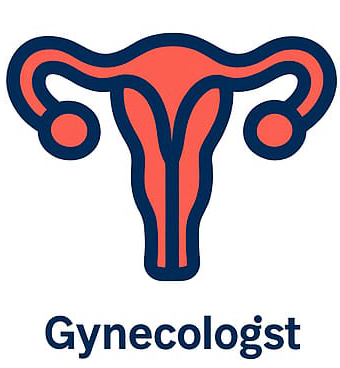
Pediatrician


Diabetologist


Gynecologist


Orthopedics


General Surgeon
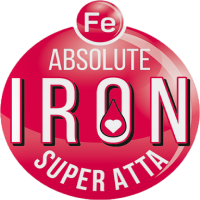

General Physicians
Doc Talks




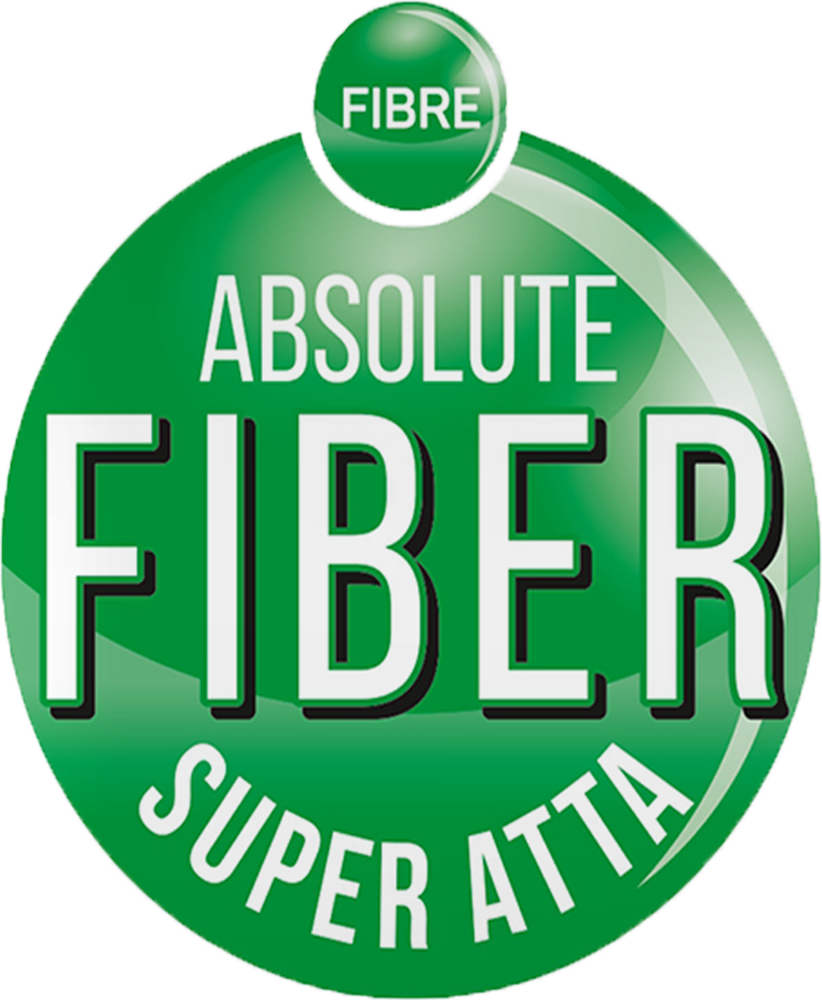

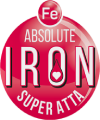

FOUNDERS MESSAGE
-
For years, I have witnessed a silent crisis in our country—not the lack of food, but the lack of true nutrition...
Read More
Contacts
-
Address
Gurugram, Haryana
-
Phone
16224799746
-
Email
